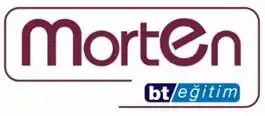About Education
This course will provide you with an in-depth introduction to Cisco's Unified Contact Center Express (Unified CCX) and all associated client applications and scripting tools. You will gain comprehensive knowledge of all Unified CCX components, servers, deployment options, and clients. You will learn in detail how to plan for capacity, select the right product features, and install the product.
Prerequisites
- Working knowledge of basic computer networking terms and concepts (e.g.: LAN, WAN, IP switching and routing)
- CUCM (Cisco Unified Communications Manager) hakkında temel bilgi
- Basic knowledge of call center operations
- Knowledge of Microsoft desktop applications and SQL database operations
Duration of Training
Toplam Süre: 5 Gün (Günde 6 saat)
Toplam Eğitim Saati: 30 saat
Eğitim Formatı: Uygulamalı ve interaktif yüz yüze /online ortam
Who Should Participate?
- Systems integrators deploying Cisco Unified CCX
- Systems engineers, architects and support personnel who:
- Maintain and configure Finesse supervisor and Finesse agent clients
- Writing scripts and maintaining script integrity
- Need a basic understanding of application-related problems and solutions
- Server system and telephone system for call center
Educational Content
- Cisco Unified CCX
- The relationship between the Unified CCX platform and the three products it supports
- Three Cisco products supported by the Unified CCX engine platform
- Unified CCX hardware and software components, including all server types, standby deployments, and scalability
- New and enhanced functionality for three Unified CCX products, including Unified CCX v11.0
- Design and Order
- Right-size Unified CCX products using Cisco-provided calculators
- Correctly order Unified CCX products using the Unified CCX configuration and ordering tool
- Network considerations surrounding a Unified CCX deployment
- Use the Cisco Unified CCX for Network Design Solution Reference and Cisco Unified IP IVR and other documentation to support a Unified CCX design and deployment
- Installation and Configuration
- Install Unified CCX software on all servers in a cluster
- Enable and configure all components in a CCX cluster
- Configure and test a simple CCX Script Application
- Troubleshoot installations using log files
- Unified CCX Editor
- Navigating Unified CCX Editor functionality
- Creating, deleting and editing variables
- Saving and loading valid scripts to the repository
- Perform debugging to test a script
- Troubleshooting an application and script using trace files
- Basic Unified CCX Editor Steps
- Create a simple script workflow to answer a call
- Adding comments to describe and explain the script and next step groups
- Play audio prompts to share information or instructions with callers
- Ending and terminating a call
- Validate, save as, load, refresh, and debug a script
- Caller and System Entries
- Collecting information from a call using the menu step
- Collecting digits from a call using the Get Digit String step
- Obtaining information from the system to change the logic of the call flow
- Validate, save as, load, refresh and debug script
- Database Access
- Connecting to a database
- Reading and retrieving information from a database by creating an SQL query in a script step
- Referencing database locations
- Writing information to an SQL database
- Closing the database connection and terminating database resources
- Logical Operations
- Applying Boolean logic in scripts
- Creating and modifying counters
- Creating and managing scheduling cycles
- Redirect script logic based on evaluation of “if” statements
- Using subcalls as reusable scripts
- Creating custom prompts
- Caller Transfers
- Creating weekdays and time ranges for different processing
- Transfer calls to various extensions depending on day and time
- Retrieve information associated with a call
- Indicate calls as completed for reporting
- Determining whether the caller hung up
- Determining whether today is a holiday
- Unified CCX Configuration
- Cisco Unified CCX product, features, and capabilities
- Configuring Unified CCX on CUCM and CCX server
- Finesse Product Package
- Configure the Finesse Agent Desktop and Finesse Supervisor Desktop
- Testing the Finesse Agent Desktop and Finesse Supervisor Desktop configurations
- Examine the IP Telephony Agent
- Unified CCX Scripting Techniques
- Unified CCX Editor Define and use Unified CCX steps
- Test a sample application using Unified CCX steps in the Unified CCX Editor
- Finesse Manager
- Configure Unified CCX enterprise data using Finesse Desktop Manager
- Structuring workflows, staff and teams
- Creating pop-ups and macros
- Generating completion codes
- Outbound Calling and Agent Chat
- Review Outgoing Call
- Session Management
- Review Session Management to retrieve information from a previous call
- Media Resource Control Protocol (MRCP) Speech Technologies
- Reviewing Nuance ASR and TTS servers
- Reporting
- Access and analyze real-time reports
- Configure Cisco Unified Intelligence Center (CUIC) historical reporting
- Access and analyze past reports
- Service and Troubleshooting
- Traces and logs
What You Will Gain at the End of Training
- Describe the Unified CCX product and its components in detail.
- Correctly size and order Unified CCX products.
- Install, configure, and test Unified CCX.
- Create and edit complex scripts using the Unified CCX Editor.
- Design and implement advanced call flows.
- Use database access effectively.
- Perform advanced logical operations.
- Configure complex call transfers.
- Use the Finesse product suite effectively.
- Integrate outbound calling and agent chat.
- Use Session Management effectively.
- Integrate MRCP speech technologies.
- Perform advanced reporting and analysis.
- Service and troubleshoot the system effectively






